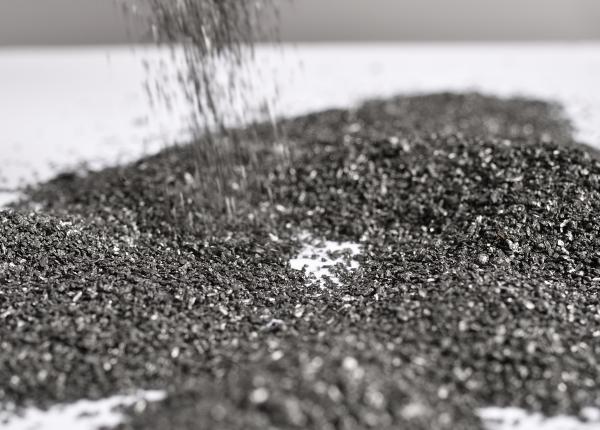Synthetic Graphite
Use Cases
Synthetic Graphite
For the production of our products, we use only the highest quality raw material with a carbon content above 99.0%. This is an alternative to natural graphites. Synthetic graphites are produced by graphitizing carbonaceous materials (such as coke, coal, or pitch) at high temperatures and are typically used in the production of graphite electrodes. We only process material that originates from the manufacturing of electrodes, not from used electrodes. Our synthetic graphites have some properties similar to natural graphites. For some applications, they can be an equivalent; for others, natural graphite may be more suitable, while in other cases, synthetic graphite is the better option.
In terms of particle size, we produce synthetic graphite with an average particle size ranging from approximately 3 μm up to 1 mm. Coarser graphites can be adjusted according to various granulation fractions, for example by combining coarse and fine particles. For coarse products, we use the designation Supragraphite U, and for fine products Micrographite U.
Our products are supplied in bags, large-volume containers, or buckets as needed.
More information
| Product | Graphite (%) | Paricle size |
|---|---|---|
| Supragraphite U C 63 | min. 99,5 | max. 10 % > 63 μm |
| Supragraphite U C 100 | min. 99,5 | max. 20 % > 100 μm |
| Supragraphite U C 200 | min. 99,0 | max. 10 % > 212 μm |
| Supragraphite U C 500 | min. 99,5 | max. 5 % > 710 μm |
| Supragraphite U C 700 | min. 99,0 | max. 5 % < 150 μm |
A selection of the most in-demand products is listed; particle size parameters can be adjusted according to your requirements.
| Product | Graphite (%) | Particle size (D50) | Particle size (max. D90) |
|---|---|---|---|
| Micrographite U C 4 | min. 99,5 | 3,5 – 5,0 µm | 10,0 |
| Micrographite U C 6 | min. 99,5 | 5,0 – 7,0 µm | 16,0 |
| Micrographite U C 10 | min. 99,5 | 7,0 – 11,0 µm | 22,0 |
| Micrographite U C 13 | min. 99,5 | 11,0 – 15,0 µm | 33,0 |
| Micrographite U C 16 | min. 99,5 | 15,0 – 18,0 µm | 42,0 |

